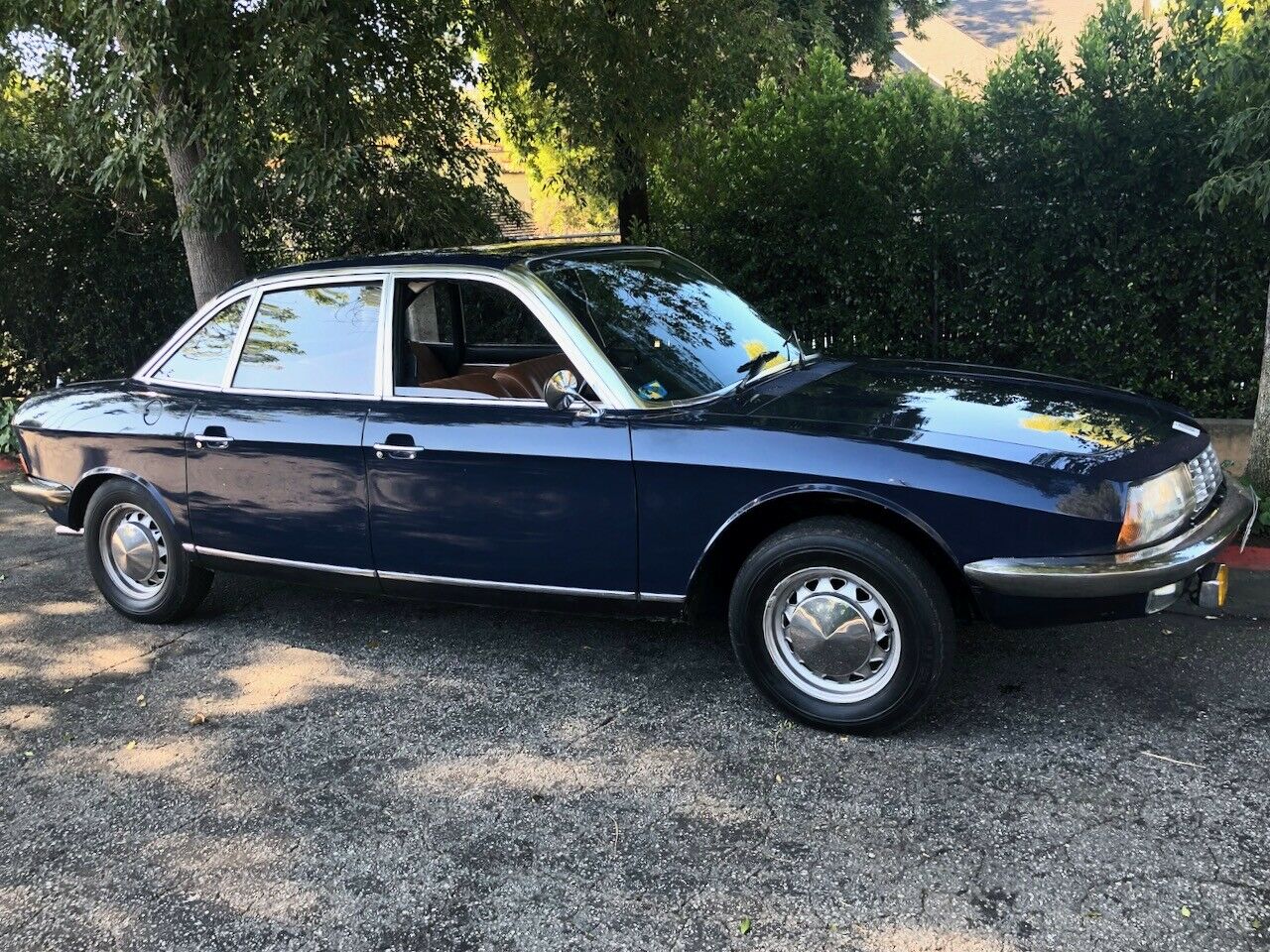Just when you thought the Mercedes-Benz AMG GT R couldn’t get any bonkers, AMG turned it up to 11. Just to be clear here, the standard GT R, as if there is anything “standard” about it, was a car so bonkers and track focused that it held the Nürburgring production car lap record for a short time. So what did it need? More stuff! All that stuff seemed to pay off, as somehow they shaved another six seconds off that lap time without adding any more power at all. How is that possible? Lighter, stiffer, and more aero. That is what this boils down to. Production is limited to just 750 examples, and one happened to pop up in Florida with an impressive 5,000 miles on the odometer.
Month: September 2020
You’d be forgiven for looking at the stats of the mid-1960s designed NSU Ro80 and thinking it was a much newer car. At the very least, it seemed quite futuristic compared to what was coming not only out of Detroit, but out of the rest of the world at the time. Aerodynamics were key to its slippery shape, unlike the rest of the world that relied on “jet†styling accents and fins to look fast. A tall, airy greenhouse provided excellent visibility for its passengers and driver. Underneath, power steering, 4-wheel independent suspension, 4-wheel disc inboard brakes and a semi-automatic gearbox with vacuum assisted clutch were the highlights – items that in some cases wouldn’t be found on mainstream cars until very recently. Then there was the engine; at only 1 liter, it didn’t sound like much to write about – but it was a twin-rotor Wankel engine with over 100 horsepower. Indeed, the power output wasn’t much less than most inline-6s of the day with 2 1/2 times the displacement. Couple that into a reasonably lightweight sedan and the performance of the NSU was certainly above average.
Looking at the NSU today, it’s easy to see design elements that were incorporated into later designs, mostly from the 1970s and 1980s. NSU’s parent Audi developed the exterior design elements further a decade and a half later into the Audi 100, most notably. Squint, and you can see it. But when I look, I also see elements from BMWs, Mercedes-Benz, Alfa Romeo, Citroen, Lancia, Fiat, and even Toyota, Mazda and Nissan – this was truly an influential design. For the most part, it was also a fringe automobile though, so not many people knew them or about the advanced platform that had been developed. They were also a bit too far ahead of the curve, suffering rotor-tip seal problems that wouldn’t really be solved for another decade by Mazda. On top of that, they were quite expensive at the time – meaning that for well-heeled buyers, the unreliability was even more unacceptable than normal. More recently in the past decade, the avant-garde Ro80 has finally been recognized by the world as a truly special page in history and a turning point in automotive design. That’s why it’s so special to see them pop up for sale, especially in America where they’ve always been rare:
CLICK FOR DETAILS: 1968 NSU RO80 on eBay
6 CommentsVery few production cars scare me. By “scare,” I mean if you hit the throttle at any reasonable moment, things get very hairy. A few of those cars have the numbers “911,” followed by the letters “GT,” and finally the number 2. The first GT2 for the US market, the 996 GT2, was a car that was probably a little too raw for the general public. If you were cruising along at 65 mph and put your foot to the floor, there is a very high chance the rear end will start to move in directions that you wouldn’t expect. The car doesn’t have traction or stability control, which you think wouldn’t be a problem unless you were driving at the limit, but the limit is very low in a 996 GT2. Or maybe the limit comes up very fast, depending on how you want to look at it.
The next generation and the car we are looking at today, the 997 GT2, thankfully was a tiny bit more tame. It had Porsche Stability Management (PSM), along with traction control to keep you from looking like a baby deer on a frozen over lake. Make no mistake though, this car will still let you kick that massive rear end out and wear some rubber off those expensive 325mm wide tires if you got a little cocky. Porsche produced only 1,216 cars total worldwide, with a mere 194 that came to the US. Somehow, these cars trade for under their 2008 sticker price of around $200,000. This example up for sale in Florida is well under that price tag. For obvious reasons, of course.
CLICK FOR DETAILS: 2008 Porsche 911 GT2 on eBay
6 CommentsLaunched in 1992 for U.S. shores, the third generation 3-series instantly cemented itself as the new benchmark. In fact, for all of the attention fawned on ‘God’s Chariot’ (the E30), the reality is that the 3-series didn’t appear on notoriously BMW-leaning Car and Driver‘s Ten-Best list until the 1992 model year. Equipped with the M50 DOHC 189 horsepower inline-6, the modern yet still driver-oriented design would go on to become a regular thereafter. They were a sales success too, and like the E30 was for some time, they’re currently being largely ignored in the used market. After all, if you can get a clean M3 in the teens, why would you buy a 325i instead?
Well, this one is an interesting counterpoint. Someone obviously loved it a lot, and this E36 convertible is chock-full of options and neat accessories. And, it’s only got 18,000 miles:
CLICK FOR DETAILS: 1995 BMW 325i Convertible on eBay
8 CommentsThe 1991-1992 GTI followed the same basic recipe as the 1987 model the double-overhead cam motor was introduced in, but everything was turned up a few notches. Starting in the mid-1990 model year, all US bound A2s received the ‘big bumper’ treatment; new smooth aerodynamic covers front and rear. To help to differentiate it a bit, the GTI’s blackened arches were widened. Filling those arches were new 15″ wheels from BBS. The multi-piece RMs were lightweight and the perfect fit for the design, echoing other contemporary class-leading sports cars such as the M3. Volkswagen color-coded the mirrors and rear spoiler to match the car, as well. VW also gave the GTI a fresh face with more illumination; quad round lights filled the grill, and foglights were integrated into the lower bumper. Prominent GTI 16V badges still encircled the car.
Power was up to match the heightened looks. Now with 2.0 liters of twin-cam fun, the GTI produced 134 horsepower at 5,800 RPMs and 133 lb. ft of torque at 4,400 RPMs. Coupled to the close-ratio 5-speed manual, that was good enough to drop 0-60 times below 8 seconds. That may not sound like much today, but at the time it was another league of performance compared to the typical economy car. Holding you in place were the same heavily-bolstered Recaros that special editions like the ‘Helios’ 1989 Jetta GLI Wolfsburg had enjoyed.
It was a recipe for success, but these cars were also relatively expensive in period, and fell into the global recession time frame which affected sales of nearly all European marques drastically. The general consensus is that around 5,000 of the last of these GTIs were imported, putting their rarity on the level of the M3. But because they weren’t M3s, there are far less around today to enjoy and few turn up in stock configuration for a myriad of reasons. This example has not been spared that fate, but it still looks worth consideration:







